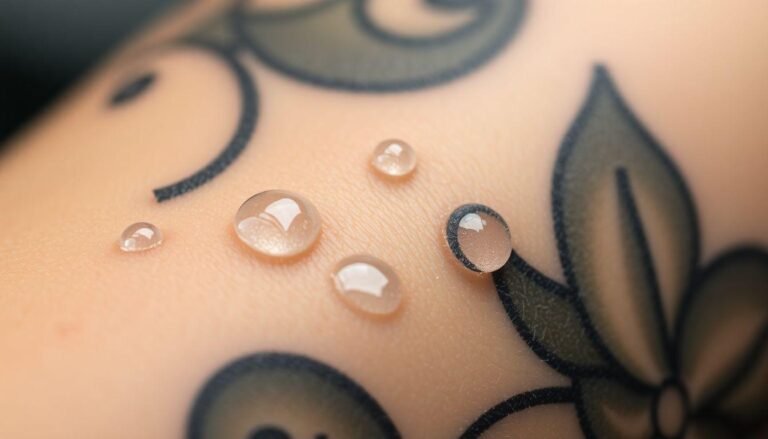Getting a tattoo is a deeply personal experience, but the joy can quickly turn to concern when your fresh ink develops a tear or begins to show signs of damage. Whether you’re sporting your first piece of body art or you’re a tattoo enthusiast with multiple designs, knowing how to properly care for your skin during the healing process is crucial. Preventing and treating a tear in skin tattoo requires attention to detail and proper aftercare techniques. The good news is that with the right approach, most minor issues can be addressed effectively, preserving both the appearance and meaning behind your chosen design.
Understanding Tattoo Skin Tears: Causes and Concerns
Before we jump into prevention and treatment tips, it’s important to understand what exactly a tattoo tear is. When your skin is tattooed, tiny needles deposit ink beneath the surface, creating thousands of microscopic wounds. During healing, these areas can sometimes develop tears – small splits in the skin that can affect the appearance of your tattoo and potentially lead to infection if not properly addressed.
Common causes include:
The healing process typically takes 2-4 weeks for the surface and up to 6 months for complete healing beneath the skin. During this time, your tattoo is vulnerable to damage that could affect its final appearance.
Tip 1: Proper Initial Aftercare Is Your Best Prevention
The first 72 hours after getting your tattoo are absolutely critical. Your artist will likely cover your fresh tattoo with a bandage or plastic wrap. Follow their specific instructions about when to remove it – usually between 2-24 hours depending on the type of covering used.
When it’s time to clean your tattoo:
“I tell all my clients that how they handle those first few days can make or break the final look,” says Maya, a tattoo artist with 15 years of experience. “Gentle cleaning without scrubbing is absolutely essential.”
What Products Should You Use?
Your artist may recommend specific products, but generally, a thin layer of fragrance-free, alcohol-free moisturizer or specialized tattoo aftercare product works best. Products containing petroleum (like Vaseline) are typically only recommended for the very first stage and should be avoided after the initial day as they can draw out ink and prevent proper breathing of the skin.
Tip 2: Avoid Activities That Strain Your Tattoo
During the healing phase, it’s crucial to avoid activities that might put stress on your tattooed skin. This is especially important for tattoos located in areas that stretch frequently or experience a lot of movement.
Activities to avoid include:
For tattoos in high-movement areas like elbows, knees, or between fingers, consider timing your tattoo appointment when you can take it easy for a few days afterward. Your future self (and tattoo!) will thank you.
Tip 3: Address Tears Immediately With The Right Approach
Despite your best efforts, sometimes tears happen. If you notice your tattooed skin has developed a small tear or split, don’t panic – but do act quickly.
Here’s what to do:
“The worst thing you can do is ignore a tear,” explains dermatologist Dr. Leah Chen. “What starts as a minor issue can quickly become problematic if bacteria enters the area. Address it early and properly.”
When to See a Professional
While minor tears can often be managed at home, certain situations call for professional attention. Seek advice from your tattoo artist or healthcare provider if:
Tip 4: Adjust Your Moisturizing Routine
Proper hydration is crucial for preventing and treating tattoo tears. When skin becomes too dry, it loses elasticity and is more prone to cracking and tearing. Conversely, over-moisturizing can prevent proper healing and trap bacteria.
For optimal moisture balance:
Climate matters too! If you live in a dry climate or it’s winter with indoor heating running, you might need to moisturize more frequently. During humid summer months, you might need less product.
Tip 5: Long-Term Care for Lasting Results
Once your tattoo has healed, ongoing care will help prevent future tears and keep your ink looking vibrant. This is especially important for older tattoos that may become more susceptible to damage as skin ages.
Long-term care strategies include:
“Think of your tattoo as a lifetime investment,” advises tattoo care specialist Jamie Lynn. “The time and money you put into proper care pays off in how good your tattoo looks 5, 10, even 20 years down the line.”
Taking care of your tattoo doesn’t end after the initial healing period. Your skin changes throughout your life, and your tattoo care routine should adapt accordingly. If you notice your healed tattoo becoming dry or the skin seeming thin, consider upgrading your moisturizer or adding skin-nourishing oils to your routine.
Remember that while these tips can help prevent and treat minor tears, every tattoo and person is unique. What works perfectly for one individual might need adjustment for another. Pay attention to how your skin responds and don’t hesitate to consult professionals when needed. With proper care and attention, your tattoo can remain a beautiful representation of your personal expression for years to come, free from problematic tears or skin damage.







